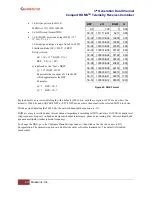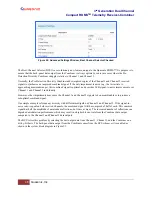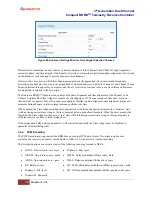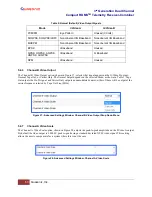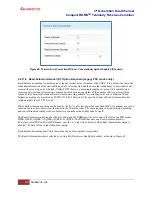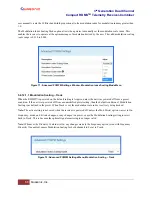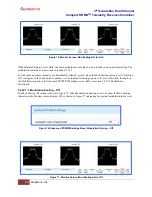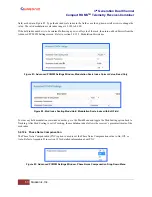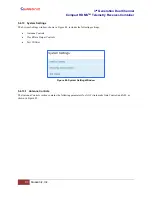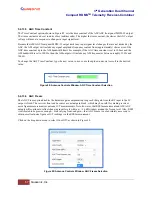
3
rd
Generation Dual Channel
Compact RDMS
TM
Telemetry Receiver-Combiner
52
Quasonix, Inc.
All of these forms of FEC are discussed in detail in the associated sections: LDPC in section 5.4.11.1, Viterbi
Decoder in section 5.4.11.2, Convolutional Symbol in section 5.4.11.3, Reed-Solomon Decoder in section 5.4.11.4,
and Interleave Depth in section 5.4.11.5.
The Viterbi decoder and Reed-Solomon decoder can be disabled or enabled by clicking on the appropriate check
box while a legacy PSK mode is selected (BPSK, QPSK, OQPSK, AQPSK, AUQPSK, or UQPSK). Likewise, the
Convolutional Symbol setting for Viterbi decoding can be disabled or enabled by clicking on its check box.
Interleave depth for Reed-Solomon decoding may be changed by typing in the desired number, or by using the
up/down arrows to scroll to the desired setting.
Figure 62: Forward Error Correction Window when in a PSK Mode
5.4.11.1 LDPC Mode (SOQPSKLDPC or STCLDPC Modes Only)
Low-Density Parity Check (LDPC) encoding is a form of forward error correction. It works by adding redundant
information at the transmitting end of a telemetry link and then using that redundancy to detect and correct errors at
the receiving end of the link. Details of LDPC coding are presented in IRIG 106-17 Appendix 2-D.
LDPC encoding can have many benefits. Its most common use is in range extension, where bit errors occur due to a
weak received signal. LDPC can improve the point at which errors start to occur by over 9 dB. This increase in link
margin is equivalent to almost tripling the operating distance of the telemetry link. Another application is error
suppression—for links like compressed video that suffer major degradation due to small numbers of errored bits.
LDPC has such a steep bit error rate curve that it converts the channel into essentially binary performance—
perfection or highly errored. Since perfection is achieved deep into the area where occasional bit errors would
normally occur, compressed video performance is greatly enhanced. Ultimately, any channel that can benefit from
error reduction and has bandwidth available will likely benefit from LDPC encoding.
The IRIG standard calls out six variants of LDPC codes—all combinations of two different information block sizes
(k=4096 bits and k=1024 bits) and three different code rates (r=1/2, r=2/3, and r=4/5), as shown in Figure 63. The
larger block size offers better decoding performance in a static channel but may work less well in a dynamic channel
with fast fading or other impairments. Lower code rates also provide better decoding performance at the cost of
increased occupied bandwidth. The optimal code choice for any application may require empirical testing to
determine.



